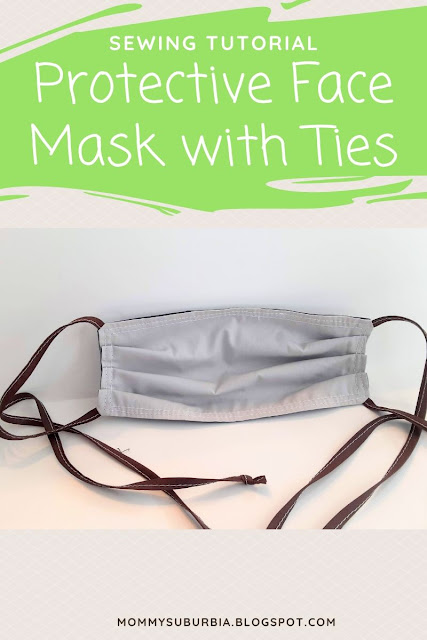This post contains affiliate links which means if you click on the link and make a purchase I may receive a small commission at no additional cost to you. For more information please see my Disclaimer page. Thanks!
I seem to always have a growing pile of brown paper bags from the grocery store that I just can't bring myself to get rid of. Do you have the same problem? So I hang onto them and they just keep piling up.
Recently I found myself short on shipping materials, mainly large envelopes. As orders for face masks in my Etsy shop started increasing, my need for more shipping envelopes skyrocketed! I started to panic a little until I remembered the growing pile of brown paper bags and I wondered if I now had a solution to fix both problems.
I got to work creating a DIY envelope I could use to ship out my face masks (or anything else). Guess what? It worked! I could even alter the size of the homemade brown bag envelopes to fit whatever size I needed.
How To Make A Shipping Envelope From A Brown Paper Grocery Bag
Today I'm going to show you how to make an envelope from a brown paper grocery bag. Ready? Let's get started.
Materials List:
Brown paper grocery bag (in fairly good condition)
Scissors
Shipping / Packing tape
Ruler
Step 1
Lay the folded brown paper bag with the bag's bottom flap face up flat on a solid surface. Fold the bottom flap back matching it up with the underside bag bottom (see picture). Cut across the bag to remove the bottom of the bag completely. You should now have a large bag tube.
Step 2
Cut the paper bag "tube" open so that you now have one long continuous rectangle. My cut open bag measures 38" long! (See picture above)
Step 3
This step will vary depending on how big of an envelope you need to make. I am making an envelope that when finished, measures just over 6 1/2" to 7" wide by the height of the bag (minus the bottom) which in my case measured 13 1/2" tall.
Cut a 14 to 14 1/2" long section of the paper bag. You should now have a 14" x 13 1/2" section of paper bag.
Step 4
Pick one of the longer sides and make a 1/2" fold along the edge. Then along the bottom edge make a 1/2" fold. The two folded sides should intersect.
Next, fold over the long side of the bag in half matching up side edges.
Step 5
Using your packing tape securely tape the bottom edge of the envelope and then tape along the side.
It is optional but I like to take a small piece of tape and from the inside of the bag tape down the folded side and bottom flaps that you make in step 4 above. This just makes sure that whatever you are sending in the envelope won't get stuck to the tape that you used along the bottom and side edges.
Step 6
Insert whatever you are shipping into your envelope, fold over the top edge and tape it securely closed.
That's it! Can you believe how simple this whole process was? Not only is it easy to do but the cost to make your own envelope is so small! I buy my bags at Aldi for about 7 cents each and I can make 2-3 envelopes with one bag. The cost of tape is the only other cost which is quite inexpensive.
I hope this tutorial was useful to you! Please let me know your thoughts in the comment section. Thanks!














